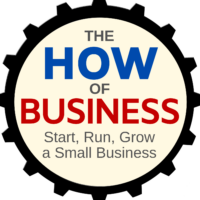![]()
Adapting to the Convenience Economy with Greg Dickinson.
How to adapt your small business to the Convenience Economy. If you don’t respond to a customer in the way they like, you will lose that customers. If we don’t adapt to the convenience economy, someone else will. Greg shares some insights on how we adapt and respond to what our customers want. We also chat about what led to Greg launch Omedym, and to writing his new book, “The Convenience Economy: B2B: Adapt Now or Pay the Price”.

Greg Dickinson is a Serial Entrepreneur, a US Air Force veteran, and is currently the CEO of Omedym – Omedym helps companies increase the watchability of digital assets for self-service engagement.
Greg has over 30 years of experience in the enterprise software industry, having worked for large software companies an been part of several start-ups. I had the pleasure of working with him in the late 90’s at Ariba.
Greg is the author of “The Convenience Economy: B2B: Adapt Now or Pay the Price”
Greg lives in South Carolina.
Our conversation covered the following topics and questions:
- Why did you get in to the computer software industry?
- Please share the story of what led to launching Omedym? (“We founded Omedym with one specific goal, to advance customers on their journey with watchable assets that help them conveniently get answers, so when they do engage, both the customer and the company are better prepared for a conversation that counts.” Greg explains.)
- What’s the origin of the name “Omedym”?
- Why did you write the book, “The Convenience Economy: B2B: Adapt Now or Pay the Price” and who is it for?
- Please introduce what you mean by the “convenience economy”.
- Speed – “Speed is critical in today’s service economy; respond instantly or almost instantly, or lose.”
- “…consumer love self-service…” – how has this impacted small businesses?
- “Four aspects define an effective convenience economy response: digital, on-demand, self-service, watch not read.”
- Describe the “Convenience Buyer” at a high level? What is remarkably different about this buyer, compared to the same buyer 5 or 10 years ago?
- “Excessive barriers to customer acquisition kills business.” – Would you provide an example of this that you often see?
- Friction, leads to Frustration, which results in No Sale.
- What are a couple of examples where you see this in a sales process for small businesses?
- Information Finding Exercise from the book (Ask someone who doesn’t know your company to find 5 to 10 pieces of information from your online assets.)
- “Does Your Business Have the Watchability Factor?” Greg shares examples on how to make your business more watchable?
- How does adapting to the convenience economy apply to providing customer support?
- Please share some examples of how small businesses can begin to adapt to the convenience economy?
Episode Host: Henry Lopez is a serial entrepreneur, small business coach, and the host of this episode of The How of Business podcast show – dedicated to helping you start, run and grow your small business.
Resources:
Books mentioned in this episode:
[We receive commissions for purchases made through these links (more info)].
- The Convenience Economy: B2B: Adapt Now or Pay the Price by Greg Dickinson
From Amazon: “The Convenience Economy is affecting every facet of your business because customers want the same convenience in business as they have in their personal lives. They want to do their research when it suits them and only talk to a person when they are ready. AND THEY CAN! It’s time to think differently! This means moving from a traditional ‘push model’ to a modern ‘consume model’ so B2B customers can serve themselves without interaction until they are ready to engage. Frictionless, on-demand and digital Platform. Static content no longer works! Customers will quickly move on unless they can easily find what they need. Keep them engaged with information that is frictionless, On-demand, and digital.Watchable assets for Self-Service Engagement. When assets are digital, interactive, and available in digestible segments 24/7, customers will consume independently until they get to a point where they are ready to engage. Don’t get left behind – adapt now. The Convenience Economy is not a passing trend. History has shown that ignoring the signs or doing nothing to adapt to changing trends can severely impact your business, or worse, make you obsolete.” - The Effortless Experience: Conquering the New Battleground for Customer Loyalty by Matthew Dixon
- Don’t Make Me Think, Revisited: A Common Sense Approach to Web Usability by Steve Krug
- Storynomics: Story-Driven Marketing in the Post-Advertising World by Robert Mckee and Tom Gerace
Other Podcast Episodes:
You can find other episodes of The How of Business podcast, the best small business podcast, on our Archives page.

